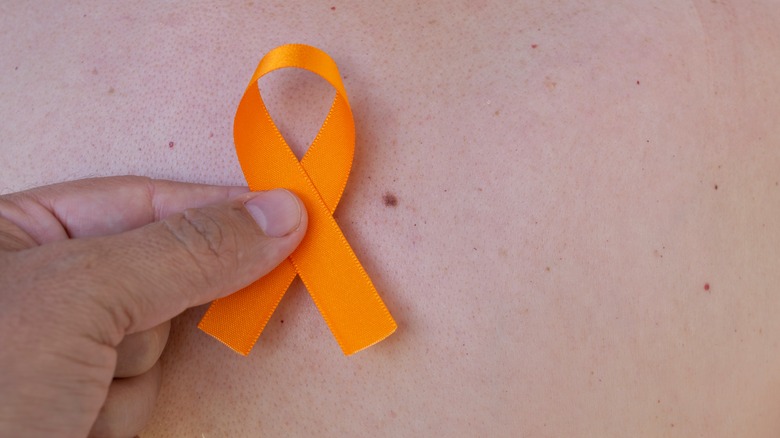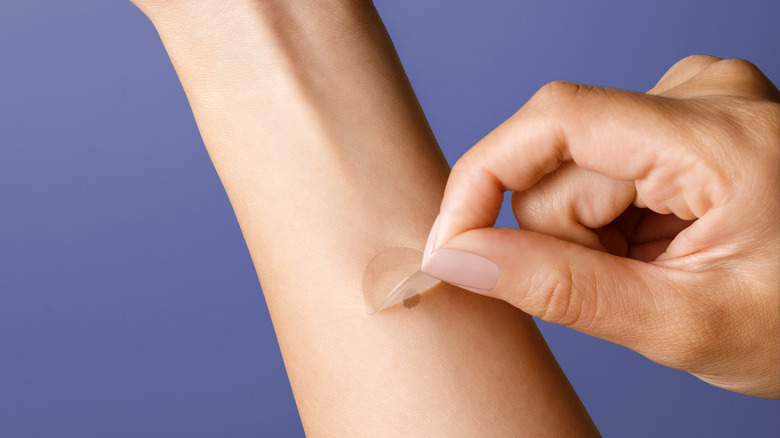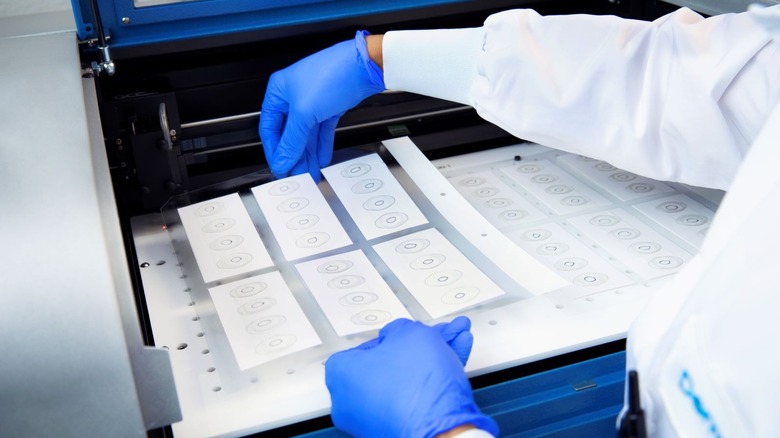Dr. John Dobak On How DermTech's Smart Stickers Will Revolutionize Melanoma Diagnosis - Exclusive
Traditionally, the diagnosis of melanoma has been a fairly subjective process. A primary care doctor or dermatologist examines suspicious moles with a tool called a dermatoscope or a magnifying glass, and if they think the mole looks like it could be cancerous, they do a biopsy. Since the diagnostic process has always relied on a doctor's visual assessment, there's a lot of room for error, which can lead to unnecessary biopsies. But it can also lead to delayed diagnosis of melanoma because the determination of whether a mole is concerning is left up to the doctor's discretion.
Dr. John Dobak and his team at DermTech, a biotech company focused on melanoma diagnosis, knew that doctors needed a better way to diagnose this concerning condition. So, they set out to develop one, and the result of their work is the Smart Sticker diagnostic tool. In an exclusive interview with Health Digest, Dr. Dobak explained how the Smart Stickers are used to collect skin samples without a biopsy and how DermTech's melanoma test is different than any other tool currently available to doctors.
Using Smart Stickers for earlier diagnoses
When melanoma is diagnosed early, the survival rate after five years is nearly 99%, according to Dr. Dobak. However, if it isn't diagnosed in the earliest stages, the survival rate for melanoma drops to 27%. So, Dr. Dobak and his team knew that they needed to develop tools that facilitate early diagnosis to save lives. To accomplish this, they turned to genomics, the study of the human genome.
"Cancer is fundamentally a disease of the genome," Dr. Dobak explained. "So, if we want an accurate diagnosis, we should look at what's happening at the genomic level. That's exactly what we're doing with our Smart Sticker™. We've learned that the cells deep within the epidermis migrate to the skin over about a 30-day period. By applying our Smart Sticker over the mole that's at risk for melanoma, we can measure all genomic changes occurring in the epidermis."
In the traditional diagnostic process, a doctor has to identify a suspicious mole, use a scalpel to take a skin sample, and send it off for testing. Now, any doctor can place the Smart Sticker on a mole, then peel it off, and send the sticker to DermTech's lab. The skin cells are then processed with DermTech's proprietary genomic melanoma test, which can detect signs earlier than any other test currently available.
Changing the melanoma diagnosis process
Though the Smart Stickers can provide doctors with crucial information about a patient's risk, Dr. Dobak stressed that they are not a replacement for a traditional skin biopsy.
"There will always be a role for biopsy in the diagnosis of melanoma," he said. "The DermTech Melanoma Test is positive between 10–12% of the time. When it's positive, the next step is likely a biopsy."
However, the Smart Stickers and DermTech's melanoma test can be used as an intermediary step. Before the Smart Sticker, doctors had to biopsy every suspicious mole to rule out melanoma, which meant cutting into a patient's skin every time they needed to assess a skin growth. Now, they can use the Smart Sticker to collect a sample and use the test results from DermTech to assess whether a biopsy is actually necessary. And since the process is non-invasive, doctors can collect skin cells from moles and send them off for testing before they even show typical signs of being cancerous.
To learn more, visit dermtech.com.



